| Listing 1 - 10 of 200 | << page >> |
Sort by
|
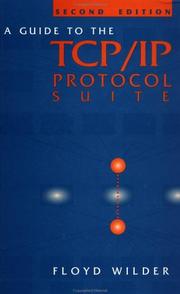
ISBN: 089006976X 9780890069769 Year: 1998 Publisher: Boston (Mass.) : Artech house,
Abstract | Keywords | Export | Availability | Bookmark
 Loading...
Loading...Choose an application
- Reference Manager
- EndNote
- RefWorks (Direct export to RefWorks)
Book
ISBN: 9780321336316 0321336313 Year: 2012 Publisher: Upper Saddle River, N.J.: Addison-Wesley,
Abstract | Keywords | Export | Availability | Bookmark
 Loading...
Loading...Choose an application
- Reference Manager
- EndNote
- RefWorks (Direct export to RefWorks)
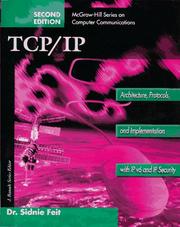
ISBN: 0070213895 Year: 1997 Publisher: New York (N.Y.) : McGraw-Hill,
Abstract | Keywords | Export | Availability | Bookmark
 Loading...
Loading...Choose an application
- Reference Manager
- EndNote
- RefWorks (Direct export to RefWorks)
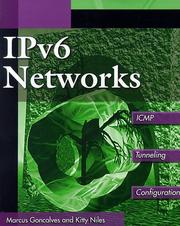
ISBN: 0070248079 Year: 1998 Publisher: New York (N.Y.) : McGraw-Hill,
Abstract | Keywords | Export | Availability | Bookmark
 Loading...
Loading...Choose an application
- Reference Manager
- EndNote
- RefWorks (Direct export to RefWorks)
Multi
ISBN: 9780128110270 0128110279 9780128110287 0128110287 Year: 2017 Publisher: Cambridge, Massachusetts : Morgan Kaufmann Publishers,
Abstract | Keywords | Export | Availability | Bookmark
 Loading...
Loading...Choose an application
- Reference Manager
- EndNote
- RefWorks (Direct export to RefWorks)
The Illustrated Network: How TCP/IP Works in a Modern Network, Second Edition presents an illustrated explanation on how TCP/IP works, using consistent examples from a working network configuration that includes servers, routers and workstations. Diagnostic traces allow the reader to follow the discussion with unprecedented clarity and precision. True to its title, there are 330+ diagrams and screenshots, as well as topology diagrams and a unique repeating chapter opening diagram. Illustrations are also used as end-of-chapter questions. Based on examples of a complete and modern network, all the material comes from real objects connected and running on the network. The book emphasizes the similarities across all networks, since all share similar components, from the smallest LAN to the global internet. Layered protocols are the rule, and all hosts attached to the Internet run certain core protocols to enable their applications to function properly. This second edition includes updates throughout, along with four completely new chapters that introduce developments that have occurred since the publication of the first edition, including optical networking, cloud concepts and VXLAN. Gives the reader insights into the most up-to-date network equipment, operating systems and router vendors Presents an illustrated explanation on how TCP/IP works with consistent examples from a working network configuration that includes servers, routers, and workstations Contains over 330 Illustrations, screen shots, topology diagrams, and a unique repeating chapter opening diagram to reinforce concepts
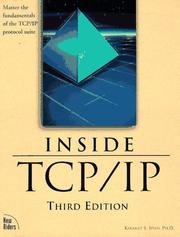
ISBN: 1562057146 Year: 1997 Publisher: Indianapolis, Ind. : New Riders Pub.,
Abstract | Keywords | Export | Availability | Bookmark
 Loading...
Loading...Choose an application
- Reference Manager
- EndNote
- RefWorks (Direct export to RefWorks)
Book
ISBN: 3748902603 Year: 2020 Publisher: Baden-Baden, Germany : Nomos Verlagsgesellschaft,
Abstract | Keywords | Export | Availability | Bookmark
 Loading...
Loading...Choose an application
- Reference Manager
- EndNote
- RefWorks (Direct export to RefWorks)
Book
ISBN: 1003149014 1000384217 1003149014 1000384179 Year: 2021 Publisher: Boca Raton, FL : CRC Press,
Abstract | Keywords | Export | Availability | Bookmark
 Loading...
Loading...Choose an application
- Reference Manager
- EndNote
- RefWorks (Direct export to RefWorks)
This book discusses link-state routing protocols (OSPF and IS-IS), and the path-vector routing protocol (BGP). It covers their most identifying characteristics, operations, and the databases they maintain. Material is presented from a practicing engineer's perspective, linking theory and fundamental concepts to common practices and real-world examples. Every aspect of the book is written to reflect current best practices using real-world examples. The book begins with a detailed description of the OSPF area types and hierarchical routing, and the different types of routers used in an OSPF autonomous system. The author goes on to describe in detail the different OSPF packet types, and inbound and outbound processing of OSPF link-state advertisements (LSAs). Next, the book gives an overview of the main features of IS-IS. The author then discusses the two-level routing hierarchy for controlling the distribution of intra-domain (Level 1) and inter-domain (Level 2) routing information within an IS-IS routing domain. He then describes in detail IS-IS network address formats, IS-IS routing metrics, IS-IS packet types, IS-IS network types and adjacency formation, IS-IS LSDB and synchronization, and IS-IS authentication. The book then reviews the main concepts of path-vector routing protocols, and describes BGP packet types, BGP session states and Finite State Machine, BGP path attributes types, and BGP Autonomous System Numbers (ASNs). Focuses solely on link-state routing protocols (OSPF and IS-IS), and the only path-vector routing protocol in use today (BGP). Reviews the basic concepts underlying the design of IS-IS and provides a detailed description of IS-IS area types and hierarchical routing, and the different types of routers used by IS-IS. Discusses the two-level routing hierarchy for controlling the distribution of intra-domain (Level 1) and inter-domain (Level 2) routing information within an IS-IS routing domain. Describes in detail BGP packet types, BGP session states and Finite State Machine, BGP path attributes types, and BGP ASNs, includes a high-level view of the typical BGP router and its components, and inbound and outbound message processing.
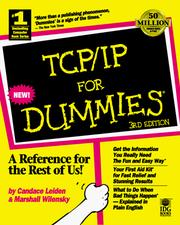
ISBN: 0764504738 Year: 1999 Publisher: Foster City IDG books worldwide
Abstract | Keywords | Export | Availability | Bookmark
 Loading...
Loading...Choose an application
- Reference Manager
- EndNote
- RefWorks (Direct export to RefWorks)
Book
ISBN: 1003149049 1000384233 1003149049 1000384195 Year: 2021 Publisher: Boca Raton, FL : CRC Press,
Abstract | Keywords | Export | Availability | Bookmark
 Loading...
Loading...Choose an application
- Reference Manager
- EndNote
- RefWorks (Direct export to RefWorks)
This book focuses on the fundamental concepts of IP routing and distance-vector routing protocols (RIPv2 and EIGRP). It discusses routing protocols from a practicing engineer⁰́₉s perspective, linking theory and fundamental concepts to common practices and everyday examples. The book benefits and reflects the author⁰́₉s more than 22 years of designing and working with IP routing devices and protocols (and Telecoms systems, in general). Every aspect of the book is written to reflect current best practices using real-world examples. This book describes the various methods used by routers to learn routing information. The author includes discussion of the characteristics of the different dynamic routing protocols, and how they differ in design and operation. He explains the processing steps involved in forwarding IP packets through an IP router to their destination and discusses the various mechanisms IP routers use for controlling routing in networks. The discussion is presented in a simple style to make it comprehensible and appealing to undergraduate and graduate level students, research and practicing engineers, scientists, IT personnel, and network engineers. It is geared toward readers who want to understand the concepts and theory of IP routing protocols, through real-world example systems and networks. Focuses on the fundamental concepts of IP routing and distance-vector routing protocols (RIPv2 and EIGRP). Describes the various methods used by routers to learn routing information. Includes discussion of the characteristics of the different dynamic routing protocols, and how they differ in design and operation. Provides detailed descriptions of the most common distance-vector routing protocols RIPv2 and EIGRP. Discusses the various mechanisms IP routers use for controlling routing in networks.
| Listing 1 - 10 of 200 | << page >> |
Sort by
|

 Search
Search Feedback
Feedback About UniCat
About UniCat  Help
Help News
News